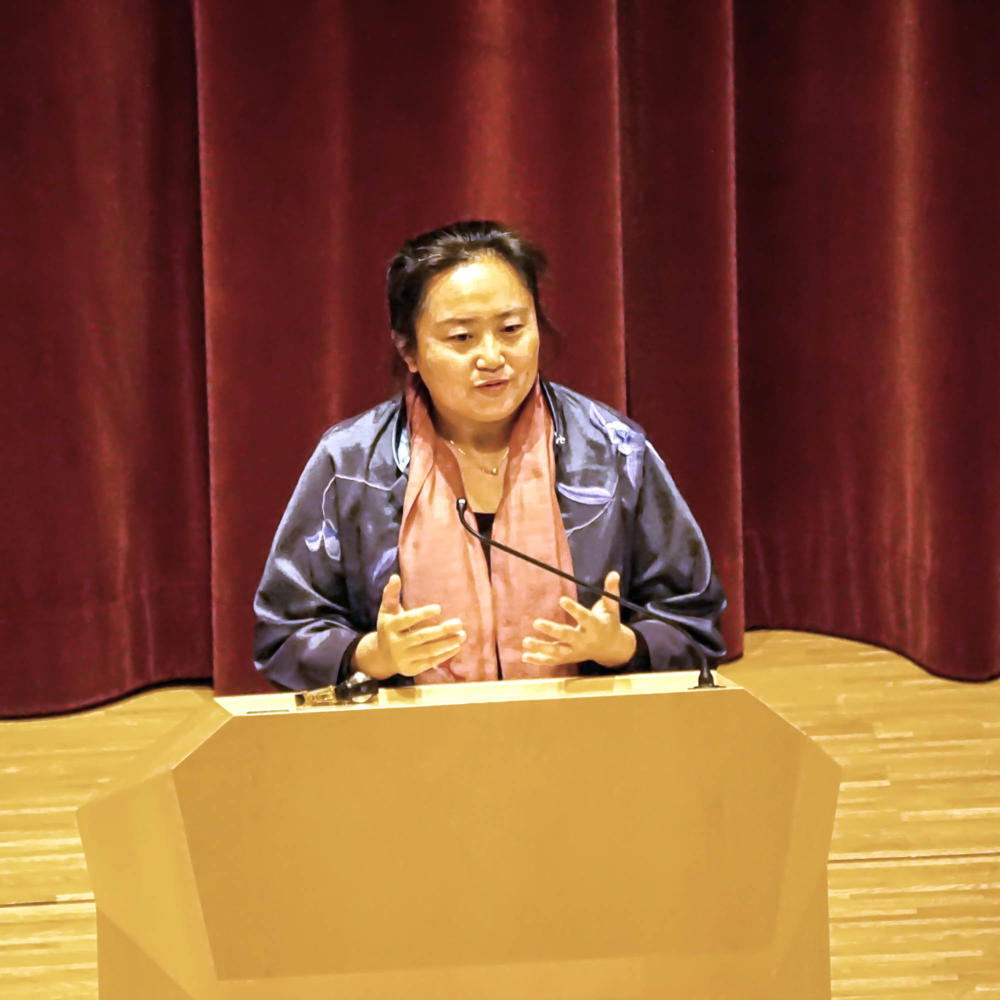The world is expecting something from anthroposophists
The General Anthroposophical Society’s Annual Conference and AGM, held at the Goetheanum from 11 to 14 April, centred on the vision of a cosmopolitan society that welcomes diversity, is aware of its globally shared impulse and is active in the world.
«We are celebrating a multicultural, complex Society that provides space for many initiatives, where each one is an autonomous part, a separate tone, that contributes to the whole.» With this motif Joan Sleigh outlined the objectives of the Executive Council at the Goetheanum. It is a vision that sees the Anthroposophical Society as the image of a cosmopolitan humanity and a diversity which «draws from one source» (Constanza Kaliks).
A space for inner practice
This vision is not a given, as Justus Wittich remarked. «Anthroposophy cannot just be something we read. It is a path on which we, with our questions, can come to find inner balance and serenity.» The Anthroposophical Society becomes a place where we can practise social skills and show how we can be humane even in a technologized world. The young members provided an ‹Open Space›, where others could express what moved them and where many spoke of grievances.
Practising coexistence in a diverse community is an important basis, but it is not an end in itself. This became apparent in contributions that dwelt on the effectiveness of anthroposophy in the social life, in education and in medicine: for Alejandro Ranovsky (AR) it is part of the anthroposophical work to enter into given situations and develop them actively without isolating oneself (Food for Thought). Gerald Häfner reminded the listeners that social threefolding is based on facts, on humanity’s social competence. He also spoke of current efforts to develop a new concept of ownership («steward ownership»). Melanie Reveriego (DE) and Rob Gordon (AU) gave deeply moving insights into the dramatic and tragic circumstances of young criminals and traumatized adults. Wolfgang Rissmann (DE) added paths and exercises for processing and healing inner imbalance and for re-establishing a balanced relationship with oneself and with the cosmos. Like Alejandro Ranovsky, Li Zhang (CN) also showed that the effectiveness of anthroposophy is part of a wider social context that we cannot determine ourselves, but that we need to find ways of dealing with – always confident that solutions can be found.
The world situation as a reason to become active
These contributions were at the same time anthroposophical studies into the soul condition of humanity and they were presented by individuals who see the situation in the world as a reason for positive activity. The reality needs to be faced. Even in Europe the anthroposophical cultural impulse is under attack, as is apparent in the closures of Waldorf Schools (gb) or of an anthroposophical hospital (SE).
The anthroposophical cultural impulse is nurtured when those representing it work actively together. At the level of the Anthroposophical Society, these are the branches, which Joan Sleigh referred to as ‹beacons›: beacons of working, studying and researching, of knowing of each other and of networking across the world. The activities of the School of Spiritual Science include the inner work in the Michael School as well as the practical application of anthroposophy in the spheres of life. These spheres and the Anthroposophical Society belong together – Matthias Girke spoke of the possibility of specialist professional groups joining the Anthroposophical Society. He said that the world «can expect something of the Anthroposophical Society».
Multifaceted ways of working at the Goetheanum
The Annual Conference and the Annual General Meeting were proof of the multifaceted ways of working that are possible at the Goetheanum. There were sixteen discussion groups for views to be shared, artistic impulses in exhibitions (new: The Art of Education. Artistic Elements in Rudolf Steiner’s Education with examples of work from the Friedwart School), eurythmy presented by the Goetheanum Eurythmy Ensemble, music performed by a chamber group formed for the occasion, and creative speech presented by a speech choir. In addition, there were contemplations on the rhythms of the Foundation Stone Meditation. The commemoration of the dead was a celebration that led from music to eurythmy to speech and then back to eurythmy and music. From its sculptural forms to the painted ceiling, Matthias Girke emphasized the importance of fostering and conveying the Goetheanum’s special aspects as a means of making anthroposophy visible. The answering of letters addressed to the Executive Council – letters that speak of heartfelt interest in the Anthroposophical Society – can promote dialogue and communication with the members.
One could have easily missed the young members’ assurance that they are practising sticking together «even when we have different views». This comment built a bridge to the motif of «living diversity» that resonated in the oral statements of the Executive Council.

